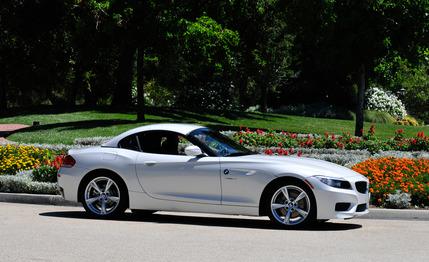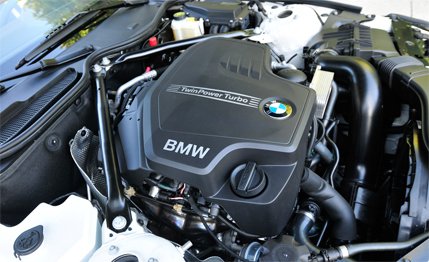
 First Drive Review
First Drive Review
Any new engine is big news to us, but when a new powerplant comes along and replaces one of our favorite engines—BMW’s naturally aspirated inline-six, in this case—we pay extra-close attention. This fall, the base Z4 and 5-series won’t have the perfectly demure and smooth-revving inline-six. Instead, the Z4 sDrive28i and the 528i will have a new turbocharged 2.0-liter four-cylinder implanted between their front fenders.
On paper, the engine is off to a good start. BMW claims the turbocharged 2.0-liter makes 240 hp at 6500 rpm and 260 lb-ft of torque at a low 1250 rpm. The redline is 7000 rpm. Compared with the naturally aspirated six of the 2011 Z4, the new engine comes up short by 15 horses but bests it by 40 lb-ft. Given that it has two fewer cylinders, it’s also shorter, and the majority of the engine’s mass sits behind the front-axle line.
Boosted Engine, Elevated Aggression
The transplant has changed the Z4’s character. It’s a little more ill-tempered, a little louder, a bit more likely to spit in public. The engine isn’t rough, but there is a slight coarseness from the engine and exhaust under stress. The bark is appropriate for a sports car; it makes the Z4 a bit more exciting and alive. There are other thrilling noises, too. Whereas BMW’s other boosted engines keep their turbo whine to a minimum, as if they were embarrassed by it, step into the boost in the Z4, and the turbocharger whistles proudly.


At 2.0 liters, there wouldn't seem to be much displacement to spool up the turbocharger quickly. But the twin-scroll turbo (the turbine is fed exhaust by two distinct pathways) builds boost with a whiny glee. There’s barely a delay between hitting the throttle and feeling the thrust. Switching into sport mode livens up the throttle response. Those used to the naturally aspirated six-cylinder will not be disappointed. A brief wait for the boost proves worth it once the 260 pound-feet of shove arrive.
BMW claims the new engine brings 0-to-60 acceleration with the manual down by 0.1 second to 5.5 and the optional eight-speed automatic will better the time of the old six-speed auto by 0.4 second, dropping it to 5.6. We figure both guesses might be a bit optimistic. Expect the sprint to take a couple more 10ths with either transmission.
Familiarities and Floor Mats
The eight-speed is expected to be the more popular transmission choice. Those customers will find that the auto is paired perfectly to the little four. The eight speeds keep the engine in its happy boost zone, and shifts are quick. The manual-transmission feel is typical BMW: accurate, albeit a little rubbery. We did find the clutch a bit slow to engage after a quick shift and rapid clutch-pedal release, though, which isn’t very sporting.
BMW will start building the four-cylinder Z4 this September.